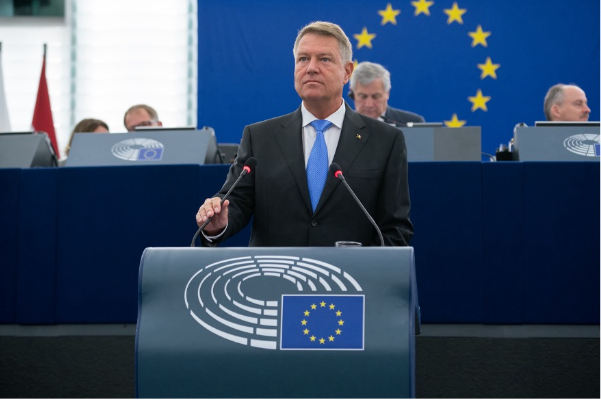Under Pressure- Romanian President Resigns
By Margaux Baudry, read 1 min 40
On Monday, February 10th, Romanian President Klaus Iohannis resigned after a third request to remove him from office was scheduled to be discussed and voted on in Parliament on Tuesday. The previous two requests, made by opposition parties, had been denied due to procedural reasons. After two mandates and ten years as head of the country, the pro-EU liberal is stepping off the stage like a disgraced comedian—under the spotlight but without the applause. Let’s look at the events that led to his resignation.
The December Election
In December, the Presidential election was voided after Calin Georgescu, an unaffiliated far-right politician, surprisingly won the first round (with a third of the votes). Romania’s top court, the Constitutional Court, alleged campaign interference by the Russian state, which Moscow denied. Hence, the election was postponed, with a fresh first round on May 4th and a second round on May 18th if no candidate obtains 50% of the votes.
Reactions & Resignation
President Iohannis had originally planned on staying in office until a successor was elected, many experts however criticized the decision, arguing that Romania's Constitution lacks clear provisions for extending presidential terms beyond five years.
The canceled election and Iohannis’ remaining in office were severely criticized by far-right politicians, leading to tens of thousands of people protesting the decision to delay it. Hence, after a third request to remove the President, a union of far-right parties gathered enough signatures. This union rallied the Party of Young People (POT), the AUR, and SOS Romania, joined by MPs of the pro-European Save Romania Union (USR).
To “spare Romania and the Romanian citizens from crisis" President Iohannis stepped down before the Parliament even voted on his departure. The ultra-nationalist, conspiracy theorist, and Russia fan, Georgescu, celebrated by declaring that it was time to return to the “rule of law” and for the 2nd round of elections.
To be continued…
Romania will be without a head of state until the election in May. In the meantime, Senate President and Liberal leader Ilie Bolojan is expected to replace Iohannis as interim president. Yet, the results from May might be the same as the previous ones. Indeed, Georgescu’s popularity has grown, and polls (although the number of people polled is unclear) show that 40% of Romanians plan to vote for him.
To learn more about the other candidates of the election, read Miruna-Antonia’s article: To elect or not to elect? The Romanian Situation.
